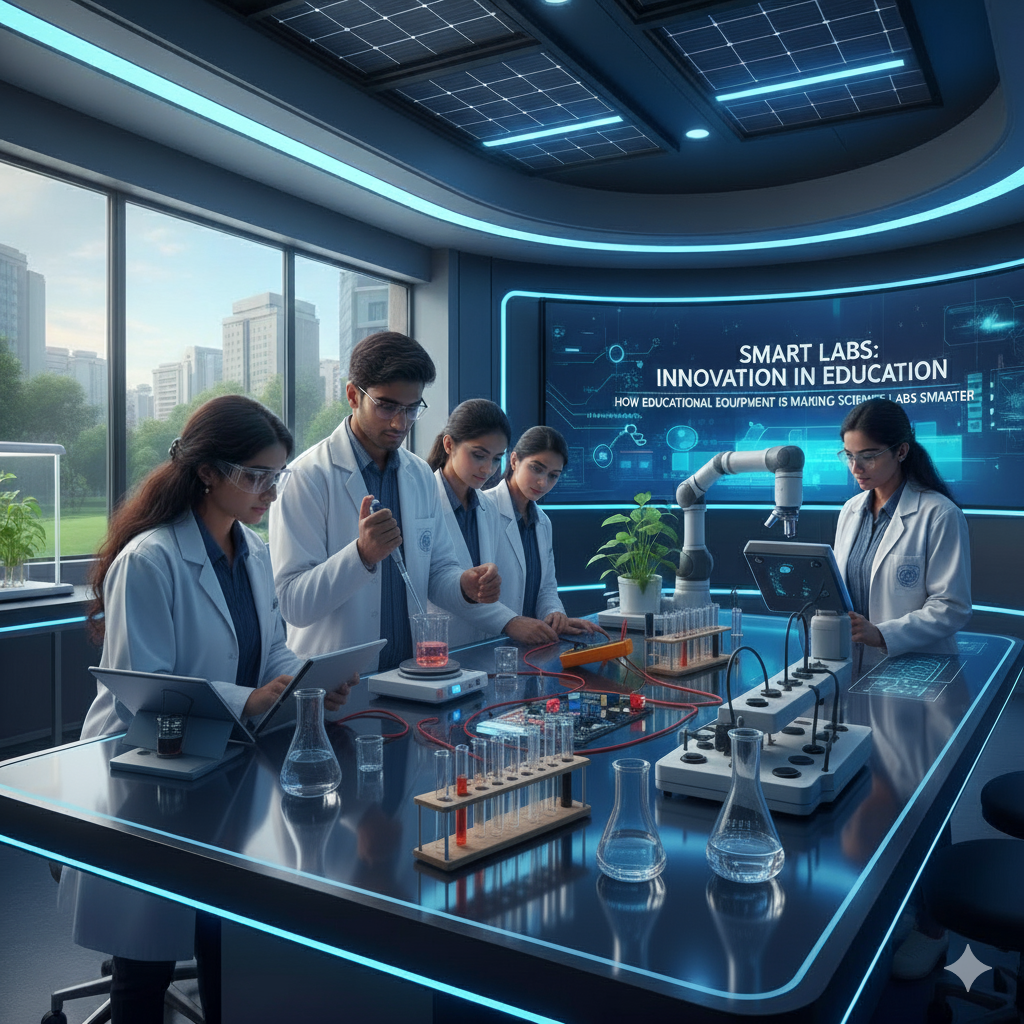7 Powerful Applications of AI in Digital Classrooms (2025 Update)

We have moved past the digital era and now we are living in the Artificial Intelligence (AI) era. AI is reshaping how educators teach, students learn, and institutions function. In 2025, the role of AI in digital classrooms is expanding — not as a replacement for teachers, but as a quiet, intelligent assistant helping make education more personalised, efficient, and inclusive.
For schools and higher education in India, the adoption of AI is less about hype and more about long-term readiness. Let’s explore seven real-world applications of AI that are actively transforming today’s digital smart classrooms into collaborative, data-driven learning environments.
7 Real World Applications of AI in Digital Classrooms

1. Adaptive Learning Paths
Not every student learns at the same pace. AI can now analyse how each learner interacts with digital content — identifying what they’ve mastered, what they’re struggling with, and what pace suits them best. Based on this analysis, AI-powered platforms recommend tailored learning paths that evolve in real-time.
For schools using digital boards or interactive classroom software, this means more than just personalisation. It means intervention without delay.
2. AI-Powered Assessments
Traditionally, teachers spend hours preparing, conducting, and evaluating assessments. With AI, that process is faster, more data-rich, and far less manual. Digital classroom tools now use machine learning to grade objective questions instantly, evaluate short answers using natural language processing, and even offer real-time feedback on assignments.
More importantly, AI tracks student growth over time — spotting learning gaps early and suggesting remedial steps. This saves time for educators and supports continuous formative assessment, aligned with NEP 2020’s vision.
3. Predictive Analytics
What if you could predict which students are likely to disengage, fall behind, or even drop out?
AI-powered analytics make that possible. By combining attendance, participation, assessment, and behavioural data, schools can now generate early warning signals. This insight enables timely interventions, whether it’s a personalised tutoring recommendation or a parent-teacher meeting.
For higher education institutions, especially those running hybrid or digital-first models, this feature is becoming essential. Many private colleges in India are now investing in predictive dashboards to support student retention.
4. Intelligent Tutoring Systems
Learning doesn’t end when class does. AI-powered tutors, often embedded into digital classroom platforms, act as virtual assistants. They answer common questions, guide students through practice modules, and even help them revise for exams.
Unlike standard chatbots, these systems improve over time, learning from user patterns. In rural or resource-constrained environments, they can supplement teacher support without needing additional human capital.
When designed well, these systems don’t compete with teachers. They extend their reach.
5. AI-Generated Content
Creating quizzes, summaries, lesson slides, or interactive activities takes time — time that teachers often don’t have.
AI-powered content tools now assist with this process. A teacher can input a chapter title, and the system generates a set of multiple-choice questions, a lesson outline, or a visual explanation. While not a full replacement for pedagogical judgment, these digital classroom tools offer a head start.
Roombr, for instance, supports educators by integrating AI-enabled tools within its digital board interface, helping create classroom-ready content in minutes.
6. Smart Attendance and Engagement Tracking
AI vision systems, often integrated with classroom cameras, can now automate roll calls. But beyond just attendance, these tools can also detect engagement levels. Is the student looking at the screen? Are they participating in collaborative tasks?
This application is still evolving, but early pilots in smart digital classrooms across Delhi and Bengaluru show promise. Teachers receive dashboard summaries, enabling them to adjust their teaching pace or address specific needs more proactively.
In government or CSR-supported schools, this kind of automation could reduce admin workload and improve learning equity.
7. Real-Time Language Translation for Multilingual Classrooms
India’s classrooms are linguistically diverse. NEP 2020 encourages regional language instruction, but the challenge lies in delivering content that’s accessible across language barriers.
AI is now enabling real-time translation and subtitling, whether in live sessions, recorded lectures, or digital assessments. This boosts inclusivity, especially in states where multiple languages coexist in a single classroom.
Some platforms even support voice-to-text transcription in Indian regional languages, expanding access to differently-abled learners.
Final Thoughts
The use of AI in the digital classrooms isn’t just a passing trend. It’s a strategic shift. For education leaders, the challenge isn’t whether to adopt AI, but how to do so responsibly, ethically, and in ways that amplify teacher impact.
While global players have showcased isolated AI features, the next leap will come from integrated, adaptive digital ecosystems that are affordable, scalable, and built for Indian classrooms.
AI doesn’t replace educators. It equips them. It brings scale to individual care. And for decision-makers building the classroom of the future, it’s one of the most powerful tools already available today.
Curious how AI can actually work in your classrooms? Let’s talk about what’s possible with Roombr Digital Classroom. Book a free consultation.
Foziya Abuwala
Share
Step Into the future of
Education with Roombr

















